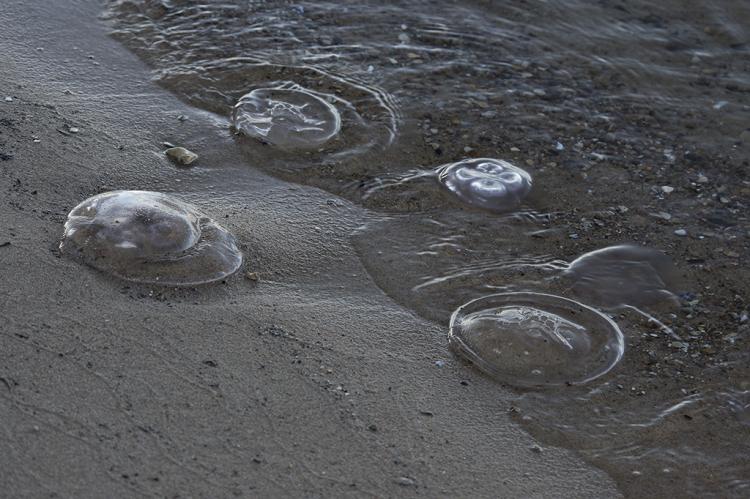Projected “Jellygeddon” yet to materialize
Reports of pending jellyfish apocalypse greatly exaggerated
For two decades, sensationalist headlines have prophesied the gelatinous end to the oceans as we know them. With jellyfish numbers thriving due to climate change, massive blooms were predicted to shutter power plants, cripple fisheries and kill unsuspecting beachgoers.
However, Rob Condon, a plankton ecologist at the University of North Carolina Wilmington, states there is no evidence to support that story. As manager for the Jellyfish Database Initiative, Condon has been studying jellyfish for 15 years. With a database with over 500,000 records on jellyfish distributions, he knows the data on jellyfish ecology better than just about anyone.
Condon and his colleagues analyzed 255 papers on jellyfish ecology published between 1987 and 2012, looking for any statements about jellyfish population trends. Nearly half of the papers misinterpreted the studies they cited, with one in two papers containing statements about trends in jellyfish that are not supported by the references. In several cases, the original papers contained equivocal messages that were lost in citation. “The doom and gloom thing has been done to death, and it’s incorrect,” Condon said.
According to Condon, the scientific record has become like a game of telephone, with each new paper citing the one before, losing some of the nuance and complexity in the process. “As a result, things fall through the cracks,” he said. “And I’m including myself in this. I have a paper there with a mis-citation, so I’m not pointing fingers.”
As for the jellies, “we’re not saying they’re not increasing,” explained Condon. “We just need more data to make that conclusion.” Jellyfish populations rise and fall in long, multidecadal cycles. with numbers currently on the decline following a peak in the mid-2000s. The boom and bust nature of these animals’ existence also helps explain why so many were sure they were growing unchecked: “If you actually look at when people started thinking that jellies are increasing globally,” said Condon. “it occurred during the rising phase of the cycle.”


